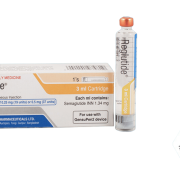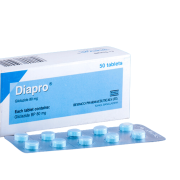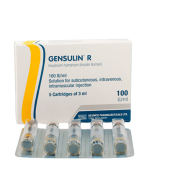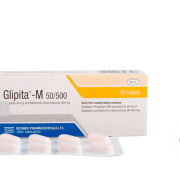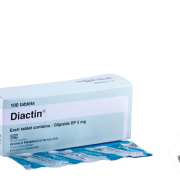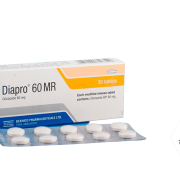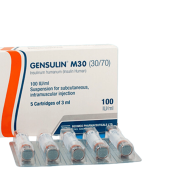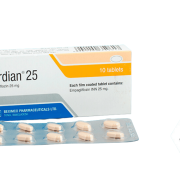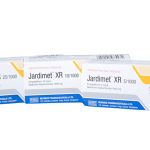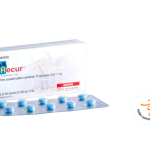Premil
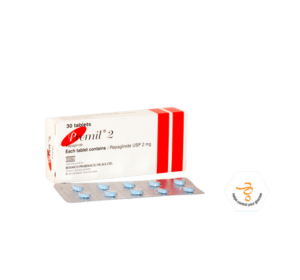
Generic Name: Gliclazide 60 mg Modified Release
Dosage Form: Tablet
TG Name: Endocrine & Diabetes
1. What Premil® is and what it is used for?
The active ingredient of Premil® is Repaglinide. Repaglinide belongs to a new class of oral antidiabetic drug called meglitinide which stimulates insulin release from β-cells of pancreas. Repaglinide is indicated as an adjunct to diet and exercise to lower the blood glucose level in patients with type 2 diabetes mellitus (NIDDM) whose hyperglycaemia cannot be controlled satisfactorily by diet and exercise alone. It is also indicated for use in combination with metformin to lower blood glucose in patients whose hyperglycaemia cannot be controlled by exercise, diet, and either Repaglinide or metformin alone.
2. Before you take Premil®
The dose of Premil® may need to be adjusted, if taken with other medications. The possible interactions of Repaglinide with other drugs are given below:
Inhibitors of the CytP450 enzyme system (azole antifungals, the macrolides erythromycin and clarithromycin) may lead to lower Repaglinide clearance and longer half-life.Inducers of the CytP450 enzyme system (rifampicin, phenobarbital, carbamazepine, troglitazone, etc.) may accelerate Repaglinide metabolism and shorten its effect.
Cimetidine has no significant effect on Repaglinide absorption or clearance.
Repaglinide has no significant effect on digoxin, theophyllin, or warfarin.
Highly protein-bound drugs (e.g., NSAIDs) may increase the plasma level of unbound Repaglinide and potentiate its glucose-lowering effect.
Thus, co-administration of these drugs with Repaglinide may increase the risk of hypoglycaemia.
The risk of hypoglycaemia may also be increased when hypoglycaemic agents are co-administered with certain drugs such as salicylates, sulfonamides, chloramphenicol, coumarins, probenecid, mono-amine oxidase (MAO) inhibitors, and β-adrenergic blockers.
When Premil® is contraindicated?
Premil® is contraindicated in patients with diabetic ketoacidosis, with or without coma, in patients with type I diabetes and in patients with known hypersensitivity to the drug or its inactive ingredients.
Premil® should also be used with caution in renal and hepatic insufficiency. In pregnancy, safety of Repaglinide has not been established. Hence, Premil® should be used during pregnancy only if it is clearly needed. It is not known whether Repaglinide is excreted in human milk. Because many drugs are excreted in human milk and because of potential for serious adverse reactions in nursing infants from Repaglinide, a decision should be made whether to discontinue nursing or the drug, taking into account the importance of the drug to the mother.
What to do in case of accidental overdose?
In clinical trials patients receiving up to 80 mg of Repaglinide developed few adverse effects other than lowering of blood glucose. Hypoglycaemia did not occur when meals were given with these high doses. Hypoglycaemic symptoms without loss of consciousness or neurologic findings should be treated aggressively with oral glucose. Patients should be closely monitored for a minimum of 24 to 48 hours, since hypoglycaemia may recur after apparent clinical recovery. There is no evidence that Repaglinide is dialyzable using haemodialysis. Severe hypoglycaemic reactions with coma, seizure or other neurological impairment occur infrequently but constitute medical emergencies requiring immediate hospitalization.If hypoglycaemic coma is diagnosed or suspected, the patient should be given a rapid intravenous injection of concentrated (50%) glucose solution. This should be followed by a continuous infusion of more dilute (10%) glucose solution at a rate that will maintain the blood glucose at a level above 100 mg/dL.
3. How to take Premil®?
Premil® has to be taken just before or up to 30 minutes before the meal. Premil® can be taken two, three or four times a day, depending on how many meals are taken. If a meal is missed, Premil® should also be avoided. If an extra meal is eaten, an extra dose of Premil® should be taken with that meal. If a dose of Premil® is missed, it should not be taken between meals. Rather the usual dose should be taken before the next meal.
The dose ranges from 0.5 to 4 mg before each meal. The starting dose of Repaglinide in patients with HbA1c 8% the starting dose is 1 or 2 mg before each meal. The dose may be increased gradually up to 4 mg before each meal.
4. Possible side effects
Hypoglycaemia (low blood glucose) is possible with all blood glucose-lowering drugs. If there are symptoms of low blood glucose (for example, headache, dizziness, tiredness, nervousness or shakiness, rapid heartbeat, or nausea), blood glucose should be tested right away. If it is low (less than 70 mg/dL on a home glucose meter), a simple carbohydrate food (for example, orange juice, quick-dissolving sugar candies, or glucose tablets) should be taken. If the symptoms do not go away, doctor should be informed. Some of the other common symptoms reported by patients taking Repaglinide include cold and flu-like symptoms, diarrhoea, joint ache, and back pain. There is some evidence that oral diabetes drugs may increase the risk of heart problems. But experts are not sure what the real risk is, if any, from taking oral diabetes medicine.
5. How to store Premil® ?
Premil® should be stored at room temperature away from moisture. Like all other medications, Premil® should be kept out of the reach of children.


